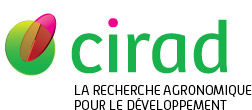Hufbauer Ruth A., Facon Benoît, Ravigné Virginie, Turgeon Julie, Foucaud Julien, Lee Carol E., Rey Olivier, Estoup Arnaud. 2012. Anthropogenically induced adaptation to invade (AIAI) : Contemporary adaptation to human-altered habitats within the native range can promote invasions. Evolutionary Applications, 5 (1) : 89-101.

|
Version publiée
- Anglais
Utilisation soumise à autorisation de l'auteur ou du Cirad. document_563341.pdf Télécharger (312kB) |
Quartile : Q2, Sujet : EVOLUTIONARY BIOLOGY
Résumé : Adaptive evolution is currently accepted as playing a significant role in biological invasions. Adaptations relevant to invasions are typically thought to occur either recently within the introduced range, as an evolutionary response to novel selection regimes, or within the native range, because of long-term adaptation to the local environment. We propose that recent adaptation within the native range, in particular adaptations to human-altered habitat, could also contribute to the evolution of invasive populations. Populations adapted to human-altered habitats in the native range are likely to increase in abundance within areas frequented by humans and associated with human transport mechanisms, thus enhancing the likelihood of transport to a novel range. Given that habitats are altered by humans in similar ways worldwide, as evidenced by global environmental homogenization, propagules from populations adapted to human-altered habitats in the native range should perform well within similarly human-altered habitats in the novel range. We label this scenario 'Anthropogenically Induced Adaptation to Invade'. We illustrate how it differs from other evolutionary processes that may occur during invasions, and how it can help explain accelerating rates of invasions.
Mots-clés Agrovoc : espèce envahissante, adaptation, habitat, dynamique des populations, dégradation de l'environnement, impact sur l'environnement, genre humain, évolution
Classification Agris : L20 - Écologie animale
F40 - Écologie végétale
E51 - Population rurale
Champ stratégique Cirad : Axe 6 (2005-2013) - Agriculture, environnement, nature et sociétés
Auteurs et affiliations
- Hufbauer Ruth A., Colorado State University (USA)
- Facon Benoît, INRA (FRA)
-
Ravigné Virginie, CIRAD-BIOS-UMR BGPI (FRA)
 ORCID: 0000-0002-4252-2574
ORCID: 0000-0002-4252-2574
- Turgeon Julie, INRA (FRA)
- Foucaud Julien, INRA (FRA)
- Lee Carol E., University of Wisconsin-Madison (USA)
- Rey Olivier, INRA (FRA)
- Estoup Arnaud, INRA (FRA)
Autres liens de la publication
Source : Cirad - Agritrop (https://agritrop.cirad.fr/563341/)
[ Page générée et mise en cache le 2025-09-22 ]




